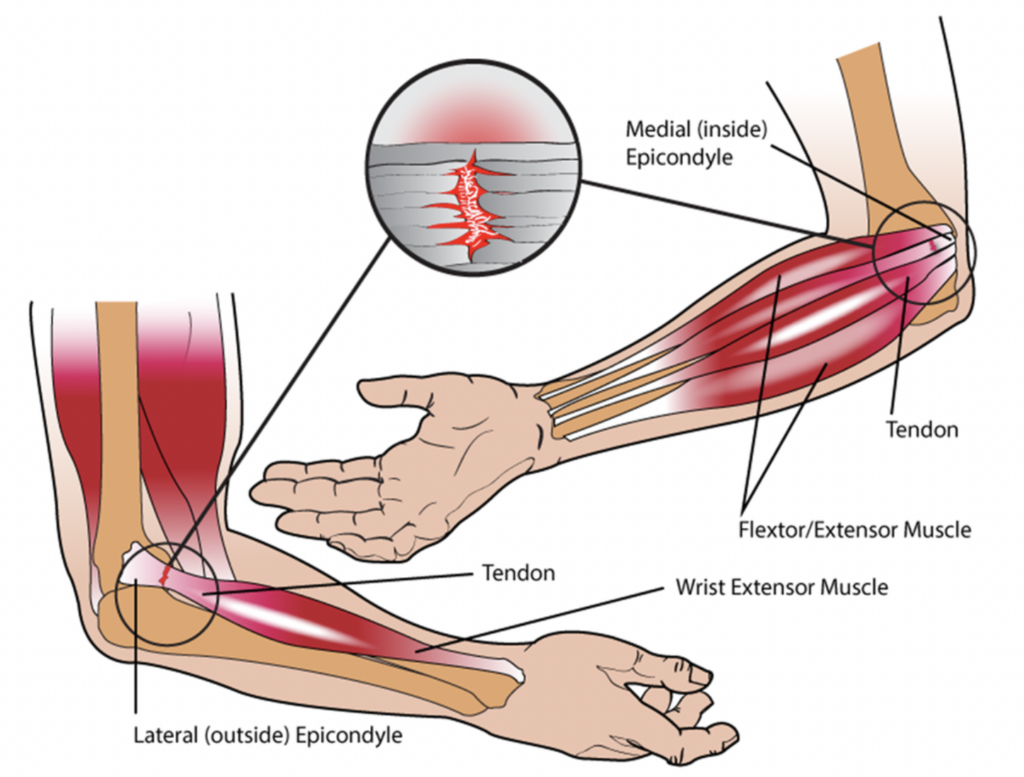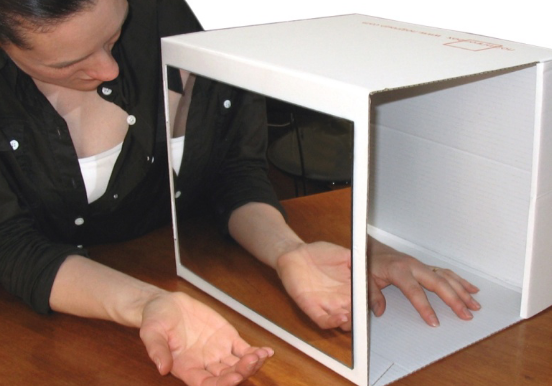Lateral Elbow Pain with Graded Exercise
Chronic tennis elbow with a supervised graded exercise protocol
Özdinçler, A. R., Baktır, Z. S., Mutlu, E. K., & Koçyiğit, A. (2023). Chronic lateral elbow tendinopathy with a supervised graded exercise protocol. Journal of Hand Therapy, 36(4), 913–922. https://doi.org/10.1016/j.jht.2022.11.005
The Skinny: This study looked at the effectiveness of an 8-week exercise program (4 weeks of a basic program and 4 weeks of an advanced program) for participants diagnosed with lateral epicondylalgia also known as tennis elbow without receiving treatment for at least one year. Pain was measured by the Visual Analog Scale, Pain Pressure Threshold, grip strength measurements using a Dynamometer, and the level of function determined with the Patient Rated Tennis Elbow Evaluation Questionnaire. All measurements were performed at baseline, after the 4-week basic program, and after the additional 4-week advanced exercise program.

In the Weeds: This study included 30 participants between the ages of 30-50 and all had a previous lateral epicondylalgia diagnosis. Participants were divided into 7 different phases depending on their ROM, stiffness, pain, and level of function. All participants received a basic exercise program for four weeks, three times per week. All exercises utilized an elastic finger band, 1 kg weight, hand exercise ball, or a towel. Those who completed the basic exercise program then began an advanced exercise program where stretching exercises, isotonic strengthening, concentric movements, and eccentric movements were included. Exercises included in the two programs were: AROM wrist extension, AROM wrist circumduction, AROM wrist radial and ulnar deviation, AROM forearm pronation, AROM forearm supination, isometric wrist extension, PROM wrist extension, eccentric and concentric wrist extension and flexion, finger extension with rubber bands, gripping with a ball, and towel squeezing/twisting.
Bringing it Home: Both in the basic exercise group and in the advanced exercise group, participants saw an improvement in pain and function. The basic exercise program was shown to ease the symptoms, while the advanced exercise program further benefited function and grip strength. It was proven that although both exercise programs were beneficial, the advanced group contributed to better results, especially in terms of grip strength, pain, and function. In addition, the study found that adding isometric exercises to the program early on was more beneficial than adding it at the halfway point.
Rating: 4/5
This study had several limitations, including a small sample size of 30 participants aged 30-50; no long-term follow-up to determine the chronic benefits of exercise for tennis elbow patients; and the main focus being wrist exercises and not including scapular exercises. Future studies could look at the long-term implications, adding phase of scapular exercises, and having a larger sample size for reliability.
More To Read
Graded Motor Imagery in Hand Therapy
The 3 Stages of Graded Motor Imagery We’ve all heard of mirror box therapy, but do you know the details of how it works? There’s actually 3 stages involved that exercise the brain and take advantage of its plasticity. There is a great deal of evidence supporting these three stages and you can use them…
Read MoreHand Therapy Marketing 101
Marketing 101 – 5 Tips for Your Therapy Clinic Confession: I hate marketing. It’s my least favorite part of my job. It is so hard to open yourself up to that much rejection but still stay positive. It feels like the professional version of blind dating, except the other person probably already has a significant…
Read MoreVideo-based rehab for shoulder injuries
Turkmen, E., Akbaba, Y., Altun, S. (2019). Effectiveness of video-based rehabilitation program on pain, functionality, and quality of life in the treatment of rotator cuff tears: A randomized controlled trial. Journal of Hand Therapy, S0894-1130(18)30396-X. DOI: https://doi.org/10.1016/j.jht.2019.08.004 The Skinny The purpose of this article was to determine the efficacy of video-based rehabilitation programs (VBR) in…
Read MoreSign-up to Get Updates Straight to Your Inbox!
Sign up with us and we will send you regular blog posts on everything hand therapy, notices every time we upload new videos and tutorials, along with handout, protocols, and other useful information.





